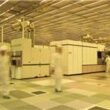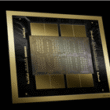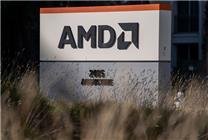Surge in Memory Prices: DDR5 and NAND Flash Show Significant Increases
Summary:
- DDR5 memory chip prices surged by 307% since September.
- DDR4 1Gbx8 memory also saw a notable increase of 158%.
- NAND flash memory prices are rising quickly due to tight supply conditions.
In recent reports on the dynamics of the memory chip market, significant price hikes have been observed, notably for DDR5 and NAND flash memory products. According to the latest findings, the spot price of DDR5 memory chips, specifically the 2Gbx8 configuration, has skyrocketed by an astonishing 307% since early September. This steep escalation reflects broader trends affecting the semiconductor industry, where supply chain challenges continue to exert upward pressure on prices.
Meanwhile, DDR4 1Gbx8 memory also experienced a notable increase in value, climbing 158% during the same period. In particular, from November 12th to November 18th, the price of DDR4 at 3200MT/s rose by 4.75%, highlighting a continuing upward trajectory amidst fluctuating demand.
The ongoing price surge has created a challenging environment for buyers, complicating their ability to absorb rising costs effectively. This has resulted in a further contraction in memory spot trading volume, as potential purchasers remain hesitant to engage in transactions under the current price conditions. Despite these difficulties, the overall outlook for the DRAM market remains robust, indicating that the upward momentum in pricing may persist.
Market Implications and Future Expectations
Given the current trends, we can anticipate that memory module prices in the spot market will continue to climb, narrowing the gap between market prices and those of chip manufacturers. This situation poses a challenge and an opportunity for businesses engaged in memory procurement, underlining the importance of strategic purchasing decisions.
On the NAND flash memory front, market conditions are equally tight, with supply constraints leading to significant price escalation in the spot market. For the week of November 12th to November 18th, the spot price of 512Gb TLC memory jumped by 14.97%, reinforcing the perception of an increasingly pressured market environment.
As we move forward, manufacturers and suppliers must remain vigilant in adapting to these market changes. Companies may consider revising their inventory strategies, operational practices, and pricing models to mitigate the impact of these surging prices.
Conclusion
The current trends in the memory chip market are indicative of broader economic factors, including supply chain disruptions and increasing demand from various sectors. As both DDR and NAND flash memory prices continue to escalate, stakeholders must remain agile and informed to navigate this changing landscape effectively.
In summary, the memory market’s rapid shifts portray a landscape fraught with challenges but also ripe with potential for foresighted strategists. The ongoing price increases call for both caution and proactive measures in procurement practices to adapt to a volatile economic environment continually reshaped by technological demands and supply chain realities.








